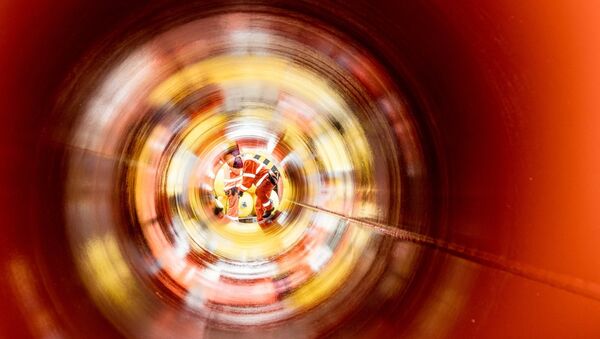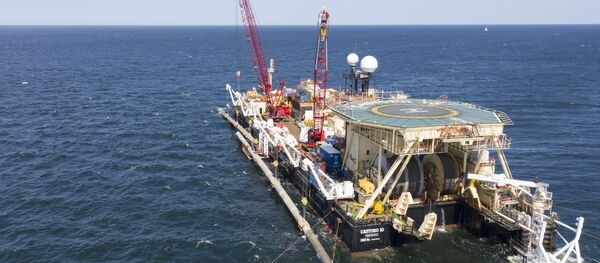The Fortuna, a Russian-flagged pipelaying crane vessel, will begin work for the Nord Stream 2 pipeline in Denmark’s exclusive economic zone starting 15 January, the Danish Maritime Authority revealed on Tuesday.
The pipelayer will be accompanied by the Baltic Explorer and Murman construction vessels, and other supply ships. A 200 meter-wide zone in either direction of the construction area has been marked off, with seabed work, unauthorised swimming, diving, anchoring and fishing temporarily forbidden in these areas.
IMPORTANT: Danish authorities have just informed that #NordStream2 pipelaying in Danish EEZ might restart as early as January 15, 2021. Anchor-barge Fortuna has been named as a pipe-layer. No info on possible involvement of Akademik Cherskiy pic.twitter.com/O508kMTI3H
— Mateusz Kubiak (@MateuszKubiak_) December 22, 2020
The Fortuna is presently operating in German waters, with construction restarting on Nord Stream 2 earlier this month after a year-long hiatus.
Denmark was the last country along the pipeline’s planned route to approve construction on its continental shelf, doing so in October 2019 after Russia, Finland, Sweden, and Germany issued similar permits. The permit was granted after Nord Stream 2 AG submitted three separate applications to the Danish government with proposed routes, with Copenhagen reportedly pressured heavily by Washington not to give its approval.
Nord Stream 2’s construction resumed earlier this month, notwithstanding the threat of fresh US sanctions against the project. Late last year, the danger of crushing US restrictions baked into the 2020 National Defence Authorisation Act (NDAA) prompted Swiss pipelaying contractor AllSeas to pull out of the project. This time around, Congress packed sanctions into the 2021 NDAA threatening companies involved in insuring and certifying the pipeline project with restrictions. According to Bloomberg, Zurich Insurance Group AG, the project’s primary insurer, and Det Norske Veritas Holding AS, a Norwegian firm involved in safety certification, may be targeted. President Trump has yet to sign the 2021 NDAA into law and has threatened to veto it over matters unrelated to Nord Stream 2.
Last Thursday, Russian President Vladimir Putin said he was certain that Nord Stream 2 would be finished, explaining there was around 165 km of the $10.5 billion, 1,230 km pipeline left to build. He also expressed hope that the next US administration would “treat its partners and allies with respect, will not insist that they neglect their national interests and will return to fair competition [in the global energy market].”
Previously, Moscow accused Washington of seeking to block construction of the joint Russian-European project to force the Europeans to buy its more expensive liquefied natural gas. US officials insist that their resistance to Nord Stream 2 is based on their concerns about "ensuring Europe’s energy security."
Nord Stream 2 is a joint partnership of Russia’s Gazprom, Germany’s Uniper and Wintershall, Austria’s OMV, France’s Engie, and the Anglo-Dutch oil concern Shell. Once completed, the new infrastructure will double the existing Nord Stream network’s capacity from 55 to 110 billion cubic meters of gas per year, turning Germany into an energy hub, and (theoretically) depriving transit states in Eastern Europe of leverage to hold gas deliveries bound for Western Europe hostage in the event of an energy dispute with Russia.


